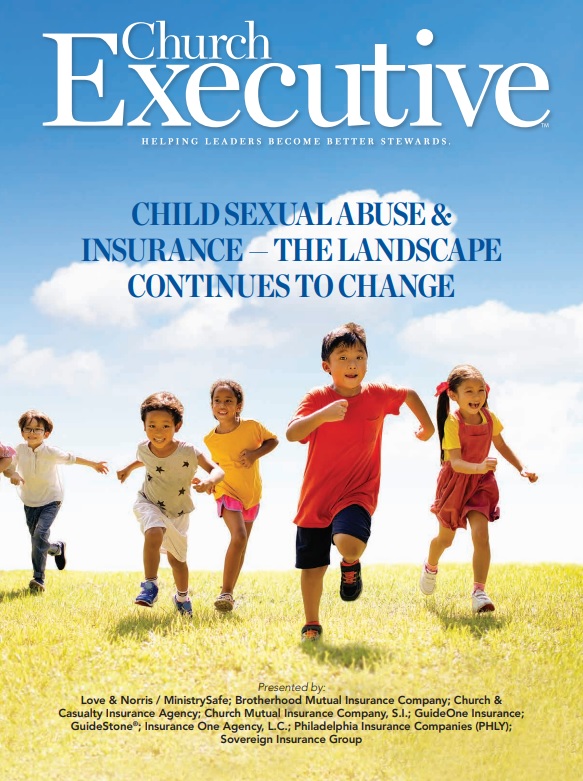

Senior Business Operations Analyst,
Risk Management Services (RMS) Department
Philadelphia Insurance Companies (PHLY)
Contractual risk transfer is a very important tool in any church executive’s risk management toolbox. However, because of its complexity, it can open the church to more risk if not used properly.
Religious organizations routinely use third parties when the risk of an operation might be beyond their willingness to take on — for example, hiring a bus company to take care of transportation, an electrician to perform wiring repairs, a plumber to install new pipes, and even hiring another non-profit to provide enrichment programs for children during summer camp or vacation bible school.
Contractual risk transfer uses legal documents, such as contracts and hold harmless agreements, to transfer the risk of these activities to the parties completing them. But a truly robust risk transfer program goes beyond just having a signed contract.
Partner with the right contractor
Before a pen ever hits the signature line of a new contract, a strong risk transfer program must start with a formal evaluation process. The following should be considered when reviewing a potential contractor or vendor:
• Do they have insurance?
• Do they understand or specialize in the services needed?
• Are they reputable? Have you asked for and checked references?
• Have you reviewed their risk management and safety protocols?
• Are they using a subcontractor, and if so — have they been vetted
as well?
• Are they able to provide all their own equipment, especially ladders, power tools and other equipment?
• If they are providing services to children or vulnerable populations, have their sexual abuse and molestation prevention measures been vetted, and do they meet or exceed your own?
Have a strong contract and hold harmless agreement

The contract is the written agreement between the religious organization and the third party. It should clearly define the expectations of the project and outline any requirements. Because the contract is a legal document, it should be reviewed by an attorney to ensure all aspects — including local laws and ordinances — are considered. Special attention should be paid to the following aspects of the contract:
Indemnification clause — Also known as the hold harmless agreement, this is a fundamental part of contractual risk transfer. This clause is what outlines how risk is transferred and who is responsible. This item should be reviewed carefully by both legal counsel and an insurance professional to ensure the church’s best interests are being protected.
Insurance requirements — This section will outline the amount of insurance the vendor should have, including any subcontractors being employed. This should include Worker’s Compensation, General Liability, Sexual Abuse and Molestation (for those providing services to children or vulnerable populations) and Automobile Liability requirements. Your insurance professional might be able to provide you with a suggested minimum limit to include.
Expiration or cancellation — Language should be included that requires the contractor/subcontractor to keep its insurance active and cannot be canceled or non-renewed by the insurance company until at least a 30-day prior written notice is provided.
Noncompliance — In addition to the above language regarding the expiration or cancellation of coverage, additional language should be provided that outlines the contractor is liable for any losses or delays due to work stoppage.
Require a Certificate of Insurance
A Certificate of Insurance (COI) is a document that verifies the existence of an insurance policy and summarizes its key aspects and conditions. These documents are usually issued by the contractor’s insurance company or broker. A standardized review of a third party’s Certificate of Insurance can help assure the risk transfer is adequate to protect your organization. The limits of insurance should match or exceed what is required by the contract and include the same language regarding being notified of any nonrenewal or cancellation. In addition, the church should be included as an “Additional Insured” and shown added by endorsement on the certificate. This ensures the church is provided the same protections as the contractor in the event of a loss.
Third parties using church grounds
It is not uncommon for religious organizations to allow other groups to come on site and use their premises, such as Alcoholics Anonymous using a Sunday school room to hold a meeting or a wedding party using the fellowship hall for their reception. Even these third parties can pose a risk and should be evaluated. While a vendor contract might be too complex to use in these instances, it is strongly recommended to require a signed building-use agreement. These agreements should include the following:
• The name of the organization, the areas being used, and the timeframe should all be clearly documented.
• It should clearly define who is responsible for cleaning, security, and any other items such as food services.
• Any fees or deposits should be clearly stipulated.
• Insurance can still be required, especially for larger gatherings or events such as wedding receptions and from organizations providing services to children/vulnerable populations.
• An indemnity or hold harmless agreement clause should be included to properly transfer the risk.
In addition to legal counsel reviewing any contracts or agreements, it’s important to partner with an insurance broker or carrier who can help strengthen your risk transfer program. Philadelphia Insurance Companies (PHLY) has this expertise and can provide the level of support religious organizations need. Consider supplementing your current risk management program with PHLY’s resources. Most are available to PHLY policyholders at no additional cost. Visit www.Phly.com/Religious for a competitive insurance quote.


